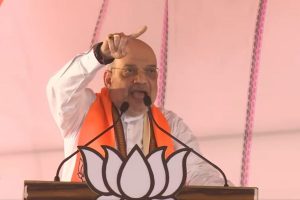India has changed its over four- decade-old definition of blindness, bringing it in line with the WHO criteria, a step that would drastically bring down the number of people considered “blind” in the country.
According to the new definition, a person who is unable to count fingers from a distance of three metres would be considered “blind” as against the earlier stipulation of six metres, which was adopted in 1976.
Advertisement
The aim of revising the definition is also to be able to generate data which can be compared with global estimates and achieve the WHO goal of reducing the blindness prevalence of India to 0.3 per cent of the total population by 2020.
The notification in this regard has been issued by the Union Health Ministry.
Going by the new definition, the population of blind people in India will reduce from 1.20 crore (as per National Blindness survey 2007 data) to 80 lakh.
“Because of the earlier definition, we were projecting a higher figure of blind people from India at any international forum, presenting ourselves in poor light.
“Also, the data that we generated under the programme could not be compared with the global estimates as other countries were following the WHO definition,” said Dr Promila Gupta, Deputy Director General of National Programme for Control of Blindness (NPCB).
Further, India has to achieve the goal set by the WHO which recommends reducing the prevalence of blindness to 0.3 per cent by 2020 to achieve the elimination of avoidable blindness.
“It would have been extremely difficult to achieve the WHO goal using the earlier NPCB definition since we had been addressing an extra 4 million (40 lakh) individuals blind due to refractive errors. Whereas, by adopting the blindness criteria of WHO, India now can achieve the goal,” said Professor Praveen Vashist, in-charge Community Ophthalmology at Dr R P Centre for Ophthalmic Sciences, AIIMS.
Also, the name of the scheme, 'National Programme for Control of Blindness' has been changed to 'The National Programme for Control of Blindness and Visual Impairment'.
“The programme, henceforth, will not only focus on the blind persons but also those with some kind of visual impairment. With the change in nomenclature, the number of beneficiaries will now increase to 40 million,” Dr Vashist added.
The previous definition of blindness was adopted at the time of the inception of the NPCB in 1976.
“The probable reason for keeping 6 metres as the cut off distance for defining blindness in India was to include economic blindness cases which referred to a level of blindness which prevents an individual to earn his or her wages.
“In contrast, the WHO definition adopts a criteria for blindness that is which hampers the routine social interaction of a person (social blindness),” Gupta said.
















